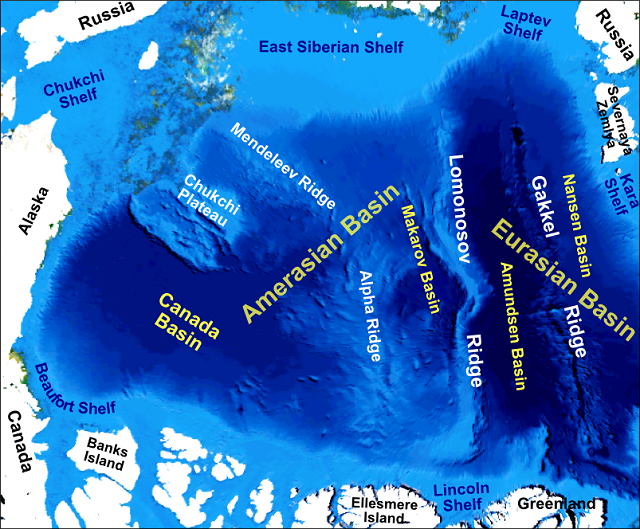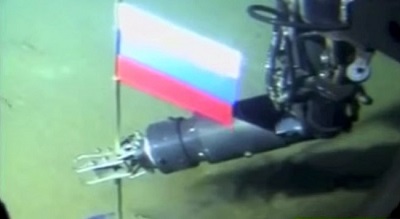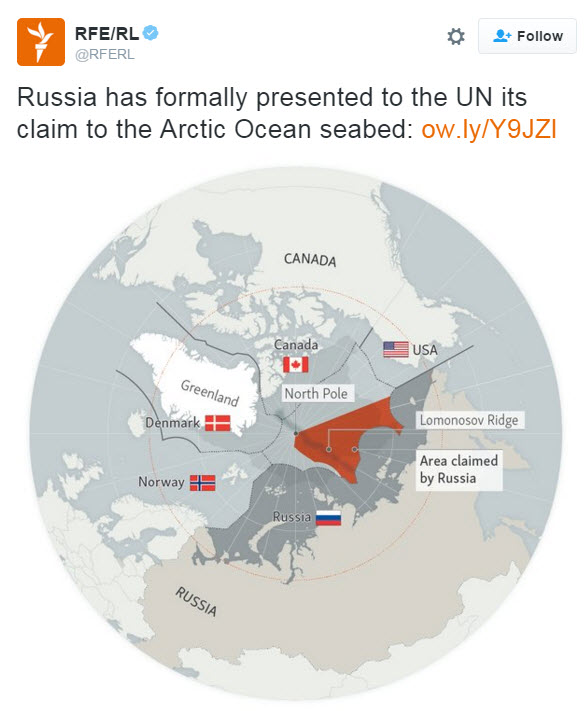Russia Formalizes New Arctic Shelf Claim
Russia formally presented its latest claim to the Arctic seabed to the United Nations on Tuesday.
The claim is part of a long-term effort to claim territory and mineral rights under the polar ice cap. Russia presented an earlier claim in August last year after its 2001 claim was rejected on technical grounds.
The latest claim was presented by minister for natural resources Sergei Donskoy who said his claim sets out Russia’s arguments based on scientific evidence that the continental shelf extends north from the Eurasian land mass far under the ice cap.
“The new application is for the same area, but features an update in light of new evidence that proves Russia's claim is correct,” Donskoi said.
Russia claims areas beyond the 200-mile exclusive economic zone that cover the shelf of the Russian Arctic marginal seas, part of the Eurasian Basin (the Nansen, Amundsen basins and the Gakkel Ridge), and the Central Amerasian Basin, which includes the Makarov Basin and the Central Arctic Submarine Elevations. Research has shown that the main parts of the Central Amerasian Basin are of continental origin and belong to submarine elevations that are natural components of the continental margin.

Russia believes the data proves the continental origin of the Lomonosov Ridge, the Mendeleyev-Alpha Rise, the Chukchi Plateau and the fact that they are extensions of the shallow-water Eurasian shelf.
According to UNCLOS, a nation can claim an exclusive economic zone over the continental shelf abutting its shores. This would mean in Russia’s case that the seabed under the North Pole would be subject to its oversight for mining and drilling.
Russian is not the only country to lay claim to a part of the Arctic shelf. Both Russia and Denmark have contested parts of the Amundsen Basin, Lomonosov Ridge, Makarov and Podvodnikov basins and the Mendeleyev Rise. A part of the Makarov Basin and the Mendeleyev Rise is contested by both Russia and Canada.
Denmark's application significantly overlaps with Russia's, in particular around the Lomonosov Ridge. Last year the country made a submission, which is expected to be considered at the current U.N. session.
Speaking at the session, Donskoi mentioned consultations that Russia had with Denmark and Canada. He stressed that the parties had reached an understanding concerning the consideration of applications and added that the commission had received three verbal notes from Canada, Denmark and the U.S. “None contained an objection to the partially revised Russian application.”
 "Taking into account the quality of evidence supporting the claim and the past experience in working with the U.N. commission, we are expecting the decision to be positive," Donskoy told RIA Novosti.
"Taking into account the quality of evidence supporting the claim and the past experience in working with the U.N. commission, we are expecting the decision to be positive," Donskoy told RIA Novosti.
In 2007, Russian Arctic explorer Artur Chilingarov, at the Kremlin’s behest, piloted a miniature submarine to the sea floor directly below the North Pole, scooped up a soil sample and planted a Russian flag made of titanium.
Russia’s aspirations to control the Arctic go back as far as Joseph Stalin’s rule last century, when the Kremlin claimed a pie-shaped section of the Arctic Ocean extending from its eastern and western borders to the North Pole.
Russian President Vladimir Putin has declared the Arctic an area of “special interest.” According to the Bellona Foundation, he has bolstered naval presence there to such an extent that he’s spent more money building new nuclear submarines than was cooperatively spent by the US and Russia to dismantle Russia’s ballistic missile submarines after the fall of the Soviet Union.

